Hiking in Italy: day hikes, spectacular long-distance treks, grand summits and stunning coastlines
Our guide to hiking in Italy: from sun-kissed coastal paths and towering volcanoes to the dramatic Dolomites and the splendour of the Western Alps
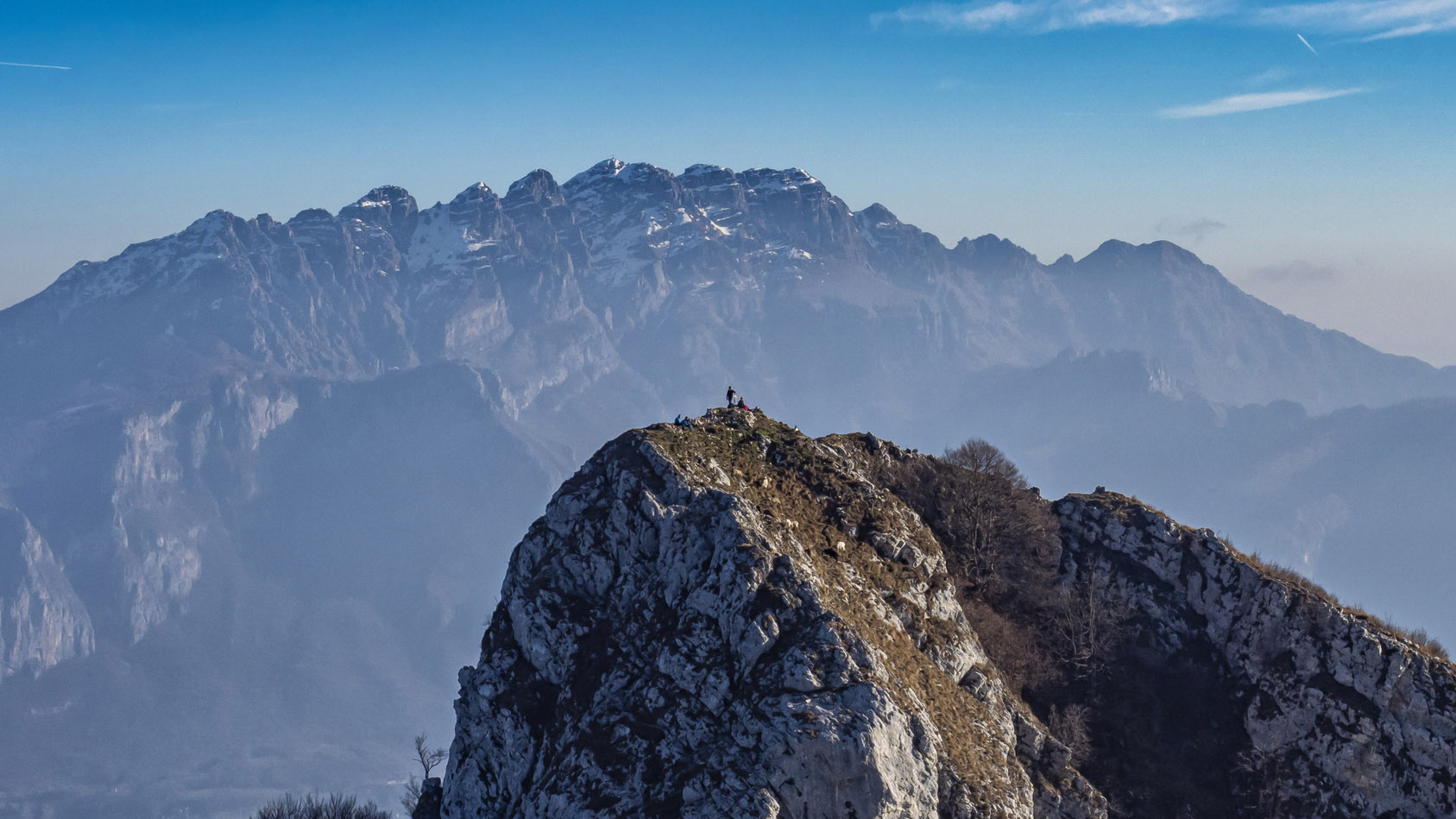
When it comes to hiking in Italy, where do you even start? For a modestly sized nation, it punches way above its weight in terms of the sheer wealth and variety of incredible landscapes on offer. Its natural history is spectacular. As it rode on up to Europe on the African tectonic plate in the late Cretaceous (yes, when tyrannosaurs and raptors roamed the Earth), the ensuing collision forged the Alps and sent geological ripples across the entire country.
The result is a backpacker’s dream. Seen from space, the country is even shaped like a boot – although admittedly it’s more like a high heel than a hiking boot. From the active volcanoes of southern Italy, the mountainous spine of the Apennines and the heavenly coastlines of Amalfi and the Cinque Terre to the weird and wonderful scenery of the Dolomites and the incredible grandeur of the Alps’ greatest mountains, Italy has it all.
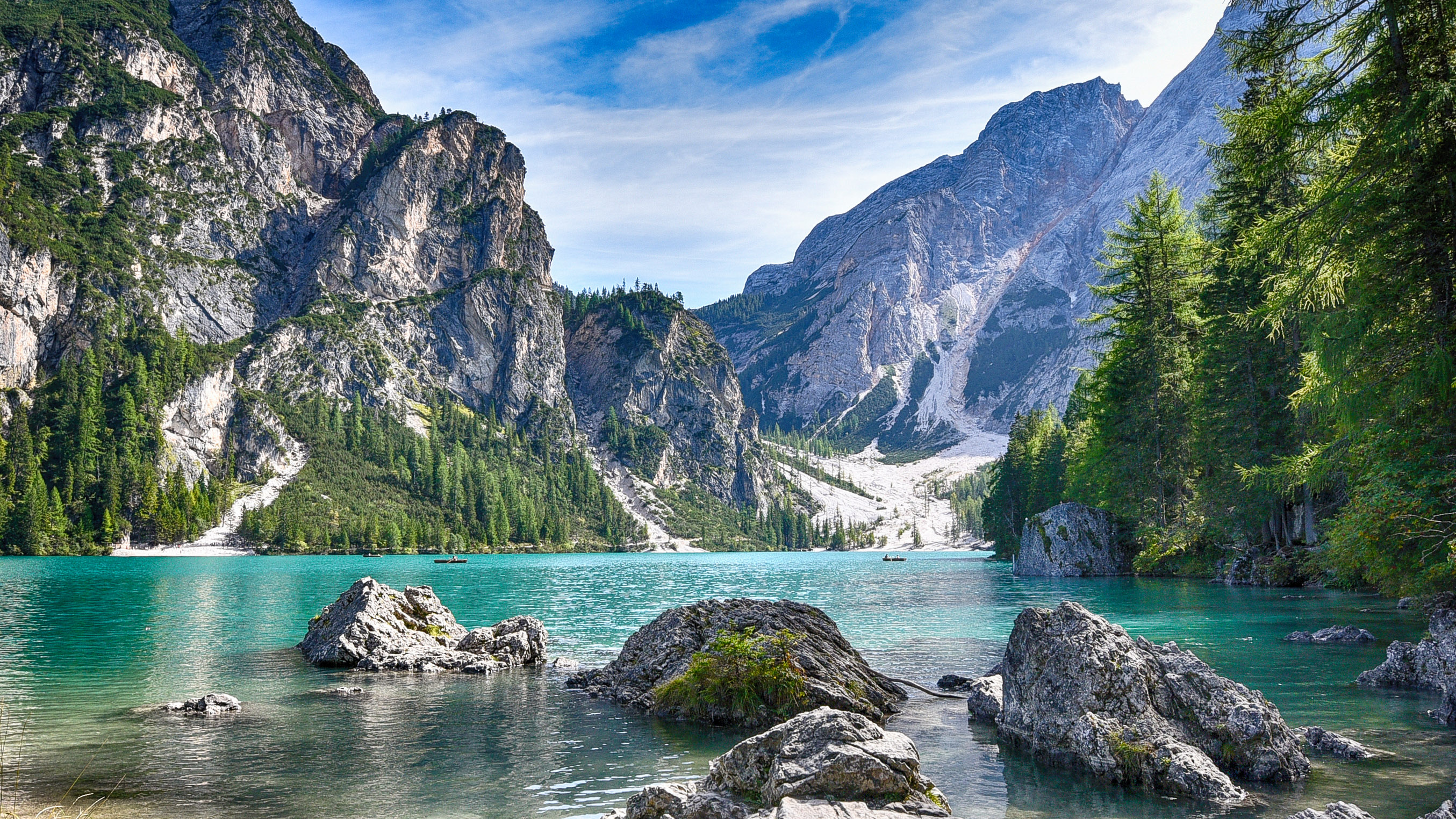
Here, we present a tiny slice, a slither of what hiking in Italy has to offer. We feature incredible day hikes along glistening coastlines, expeditions to superb summit viewpoints and walks around mountain icons. As well as this, we’ve thrown in a couple of must-do long-distance treks among Italy’s most staggering mountain scenery. So grab that hiking backpack, practise your grazies and your pregos, and get out there.
Hiking in Italy: incredible day hikes
Tre Cime di Lavaredo
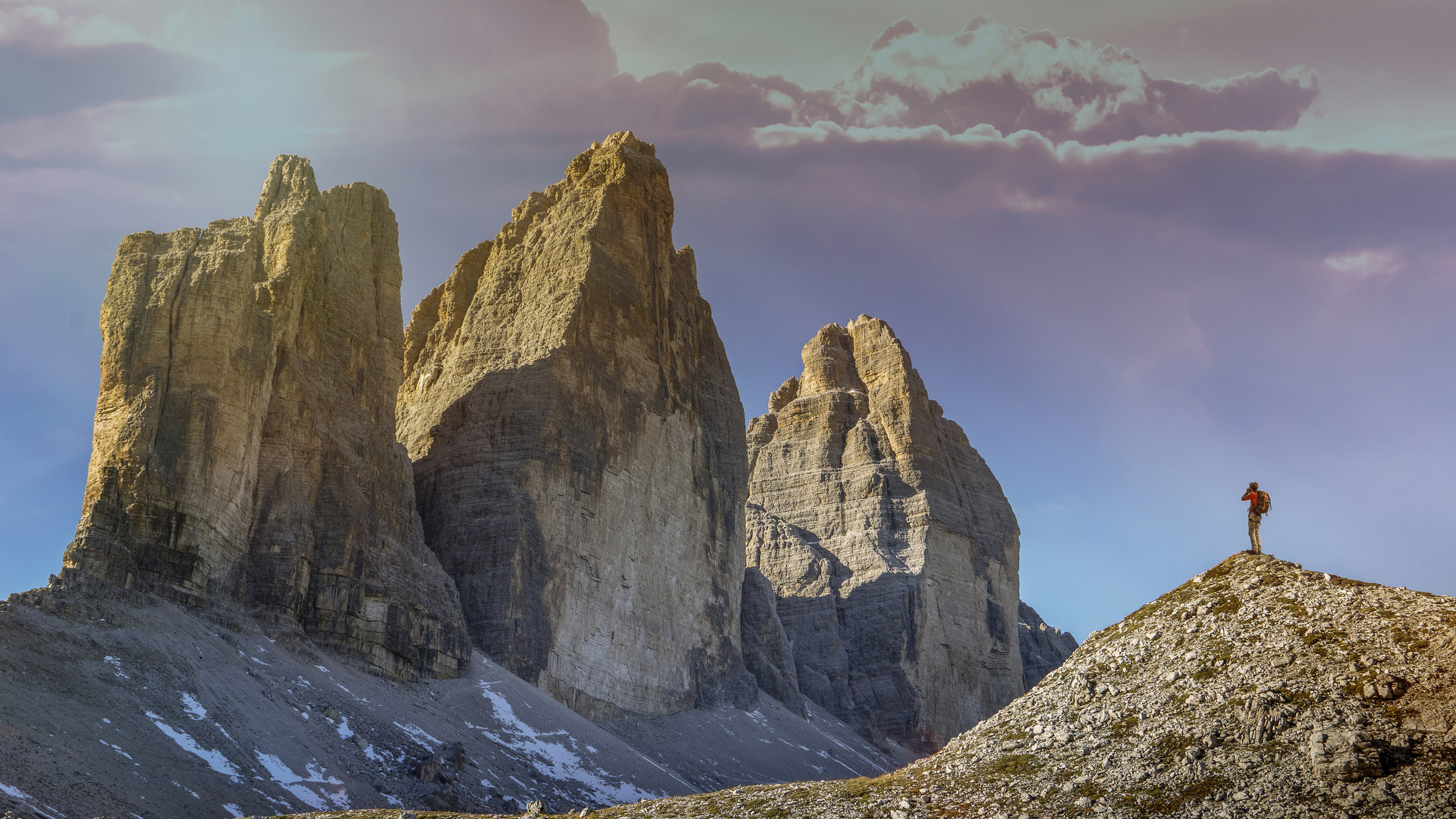
When to go: Mid-July to mid-September
Even among the Dolomites' array of exhibitionist peaks, Tre Cime di Lavaredo stand out. These three sky-scraping towers of limestone rise improbably and with an abundance of flair. There are few natural sights as astonishing as this in Europe.
One of the finest adventures here is the 10 km loop of this grand trio, allowing you to get intimately acquainted with their unique architecture. You’ll only need your day pack, as the hike also visits excellent rifugios – Italy’s characterful mountain huts – where you can kick back and relax with a hearty lunch or even spend the night. Despite the terrain’s intimidating nature, this is quite a straightforward hike and is very popular during peak season. Our advice is to tackle it early in the morning, to avoid both the crowds and the chance of getting caught in an afternoon thunderstorm.
Hiking in Italy: wonderful coastal day walks
Cinque Terre
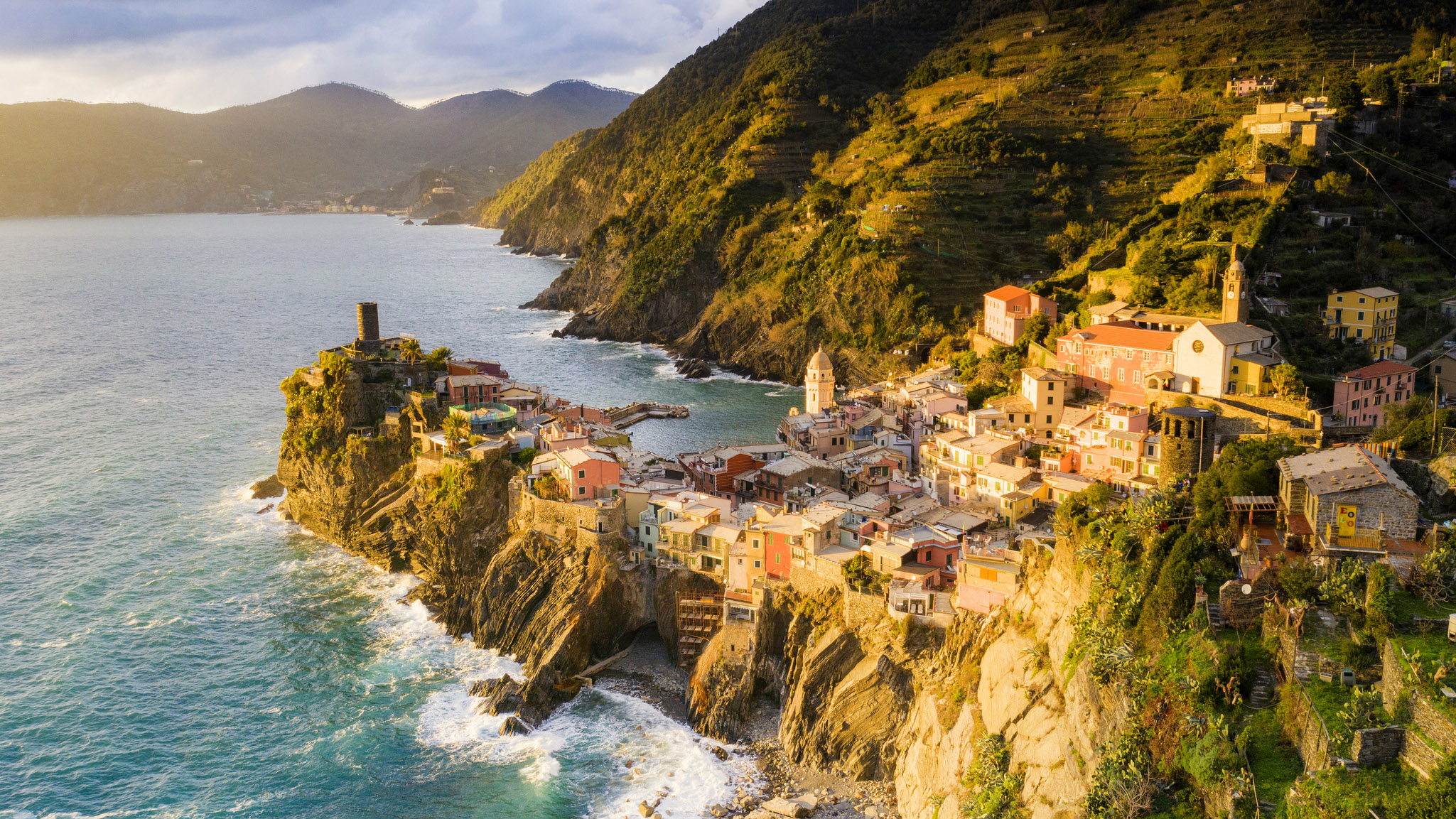
When to go: May to September
Advnture Newsletter
All the latest inspiration, tips and guides to help you plan your next Advnture!
Clinging to a spectacular coastline in wonderful seclusion are the five fishing villages of the Cinque Terre. For centuries, the only way between the stunning, pastel-hued quintet of Riomaggiore, Manorola, Corniglia, Vernazza and Montorosso was to hike the undulating paths that wove their way up the steep foothills between them or take a boat out into the Ligurian Sea. When the train line between Genoa and La Spezia was built in the late 19th century, it opened up the Cinque Terre’s scenic treasures to the masses. However, despite their popularity, the whole coastline retains the charm of a place frozen in time.
There are many fantastic day walks in the Cinque Terre National Park. Sentiero Azzuro is a classic 12 km trail that links the villages via undulating paths across the hillsides, taking you alongside olive groves, vineyards and beguiling terraced farmland. Some of the trails are prone to landslides and are often closed for repairs and maintenance, so it’s worth checking in advance.
A more challenging option for experienced hikers is Sentiero Rosso, which follows an ancient mule track along the ridgeline high above the five villages, offering magnificent sea views for much of its 40 km. It’s a tough ask on hot summer days – definitely one where you’ll want to bring your hydration pack.
Il Sentiero degli Dei
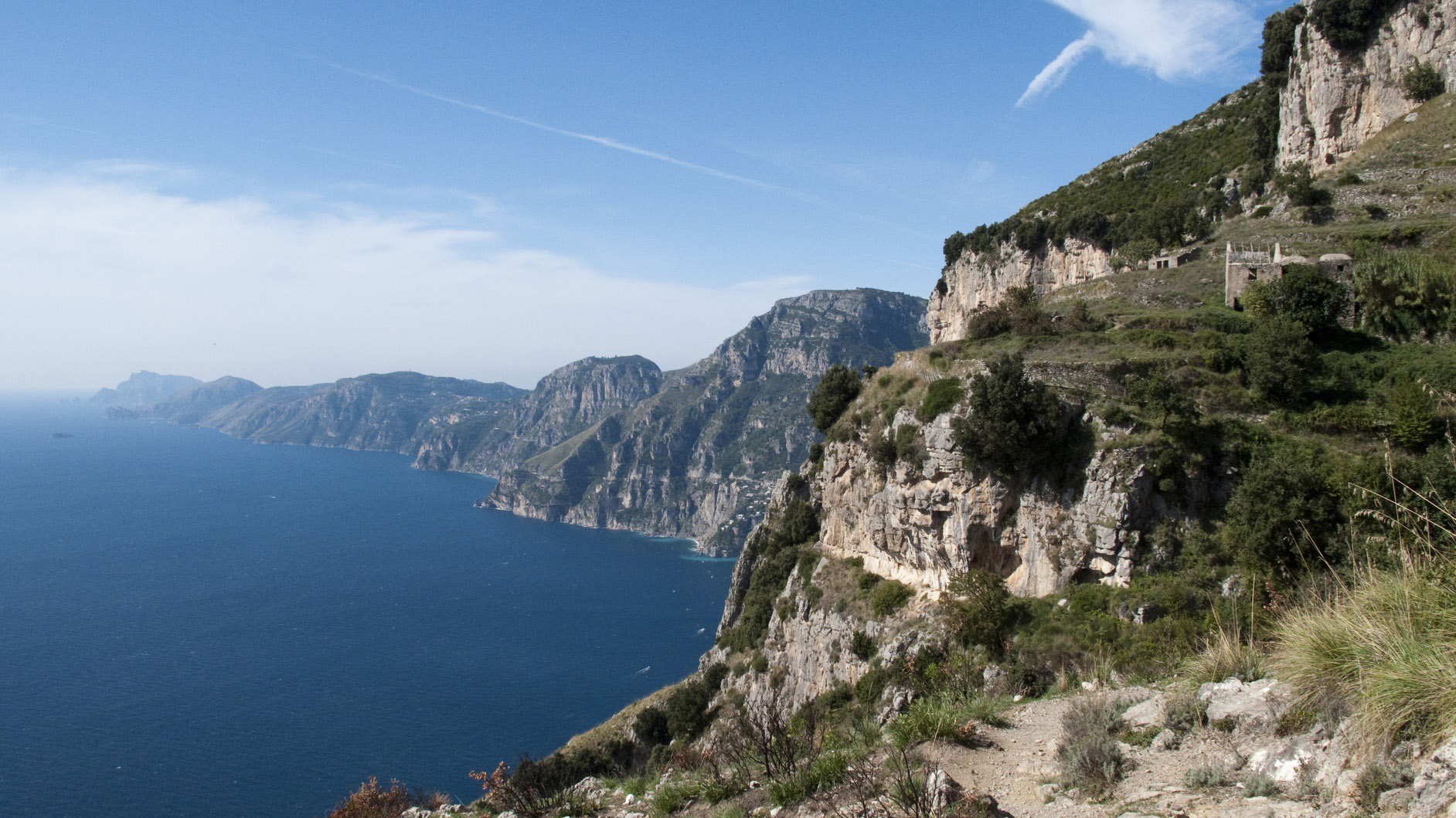
When to go: May to September
When the famously pious Italians bestow a trail with the title ‘the Path of the Gods’, you know it’s going to be something a little bit special. Following red-and-white signs on an ancient mule track across terraced fields and vibrant orchards, high above some of the Amalfi Coast’s most picturesque towns and villages, it is one of the finest 6 km you’ll ever walk. Every minute, from the gloriously situated town of Bomerano to the sleepy ancient hamlet of Nocelle is a pure delight.
The path is undulating and at times you will have to engage in a bit of a rocky clamber, however this is a mostly straightforward hike that, unlike many in the region, is not overly burdened with stair-climbing. Heavenly views of the azure Tyrrhenian Sea, bejewelled by the island of Capri, along with the dramatic cliffs and wooded slopes of the Lattari mountains are simply unforgettable and, dare we say, transcendent.
As with the Cinque Terre, paths on the Amalfi Coast are prone to landslides. Check ahead of time that the trails are open.
Hiking in Italy: day hikes to spectacular summits
Monte Resegone
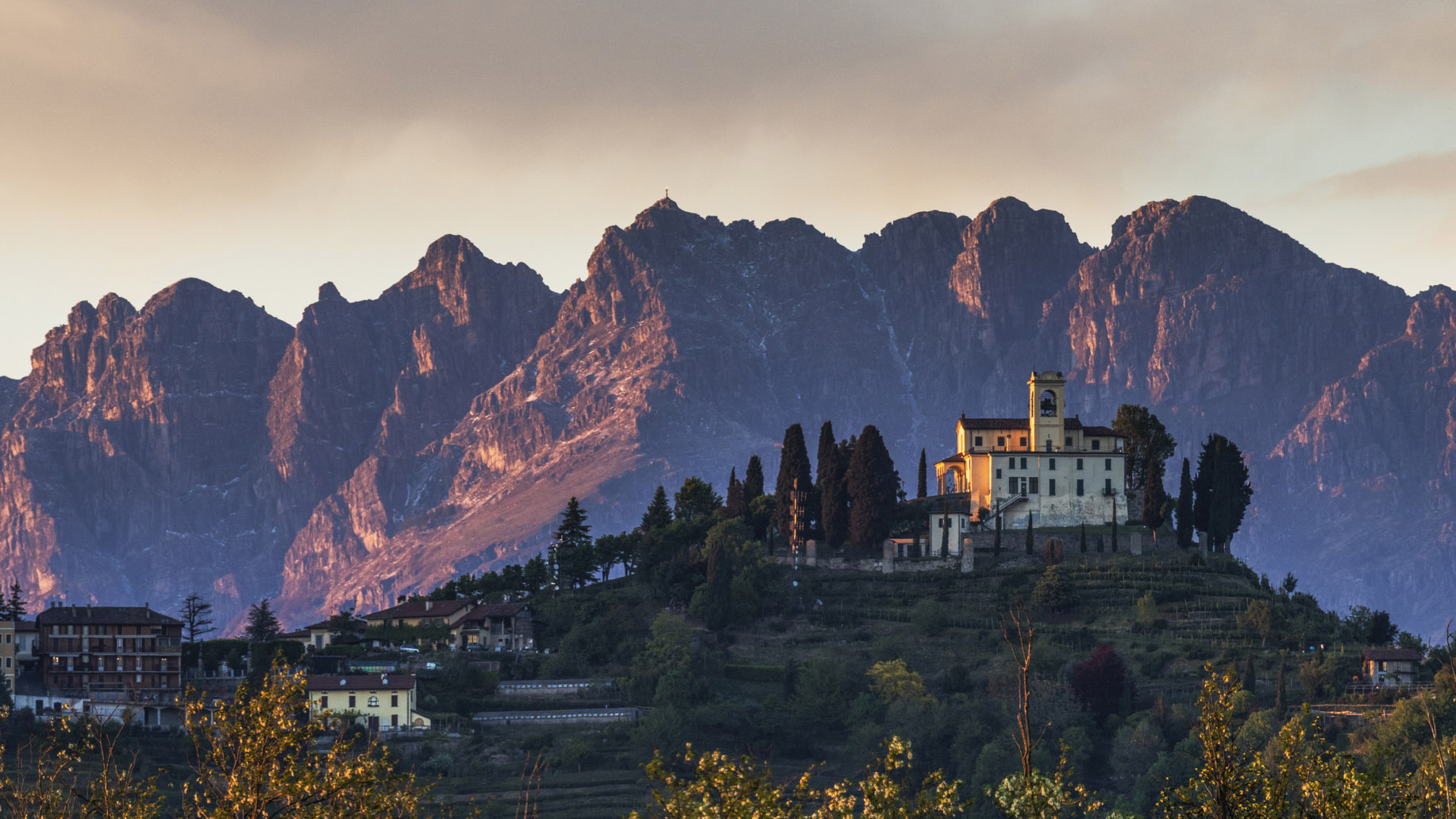
When to go: May to September
On the south-eastern tip of beautiful Lake Como, the small city of Lecco is absolutely dominated by an aggressive, multi-topped beast of a mountain: Monte Resegone. It is a breath-taking sight; its line of eleven jagged peaks is said to resemble a great saw turned upwards to the heavens. The highest of these is Punta Cermenati at 1,875 m, Resegone’s main summit. Nestled just below this is the Luigi Azzoni rifugio, an alpine hut that offers sustenance, shelter and the possibility of a night’s rest on the mountain.
A number of hiking trails and via ferratas explore the mountain, though a classic day hike to the summit is Sentiero Uno. You can either take on the knee-bashing challenge of hiking from its base, or utilize the cable car that ascends from Lecco to Piani d’Erna, at 1,329 m and start here. There are a few rocky scrambles to overcome, but experienced hikers will have little difficulty, though trekking poles are a good idea. In the later stages, as you weave your way up beneath Resegone’s great buttresses, the rock architecture is fascinating; it's as if you’ve entered a lost world. You almost wouldn’t be surprised to see dragons leaping from the eyrie-like summits, such is the atmosphere of the place and elemental grandeur on display.
Corno Grande – Via Normale
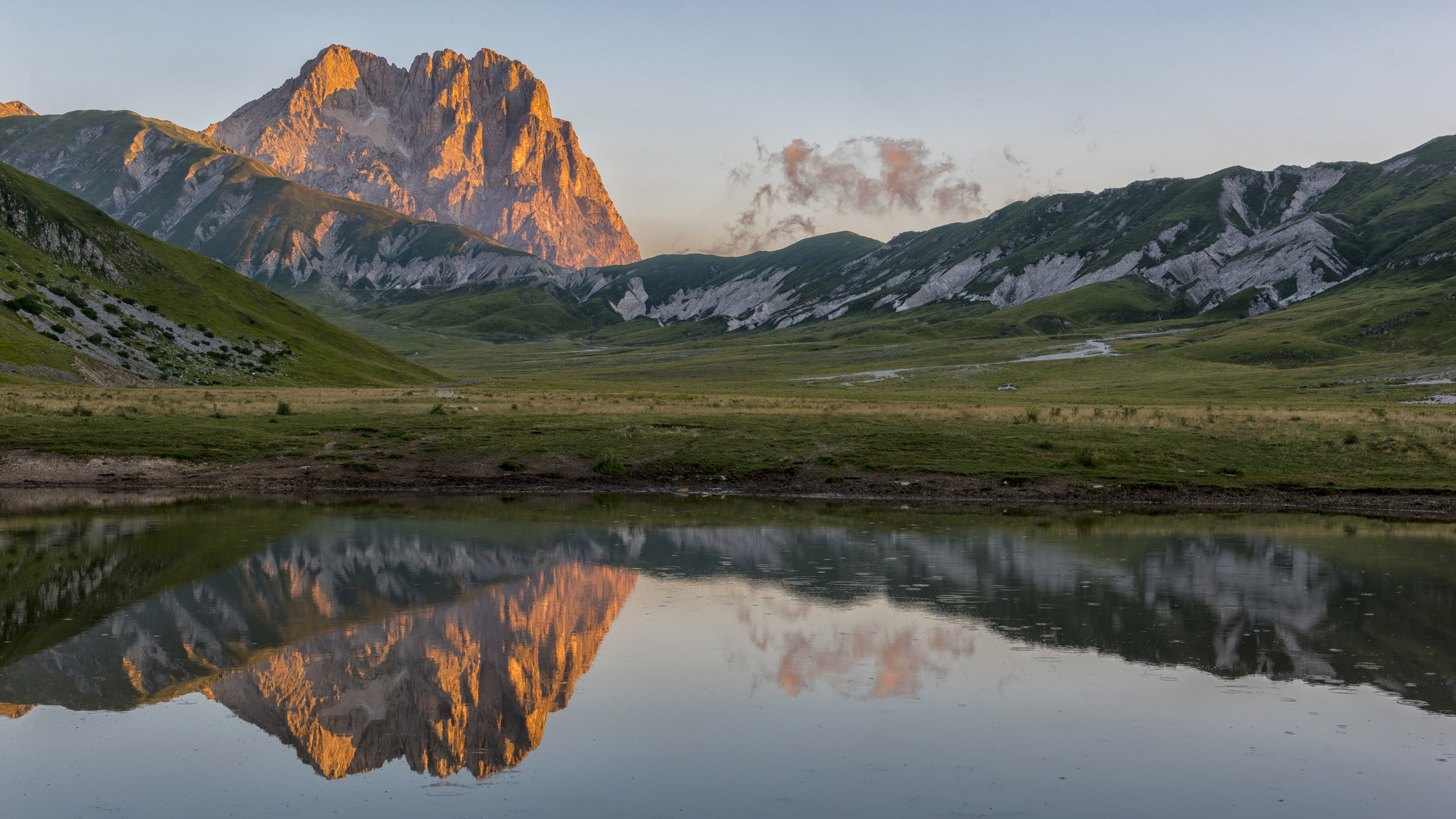
When to go: June to September
Unlike northern Italy’s alpine giants, Corno Grande is an impressive mountain right in the heart of the country that can be conquered on foot during the warmer months. Rising abruptly as a bristling crown of rock above a vast, green plain, at 2,912 m it is the loftiest point in the Apennines, the mountainous spine that runs along the length of the Italian peninsula.
Being the highest in the Apennines, the Via Normale (normal route) is a popular objective in summer and sees the kind of footfall associated with peaks like Mount Monadnock in the US or Snowdon in the UK. There are optional sections of exposed but easy scrambling on the jagged west ridge, while the most hikers follow a zigzagging scree path to the grand summit. Its relatively high altitude means that it gets fairly cold even in summer, so make sure you pack a fleece jacket or a down jacket for the top. In winter, when the mountain is covered in snow, it’s a different ball game entirely; one for mountaineers with appropriate skills and equipment only.
Mount Vesuvius
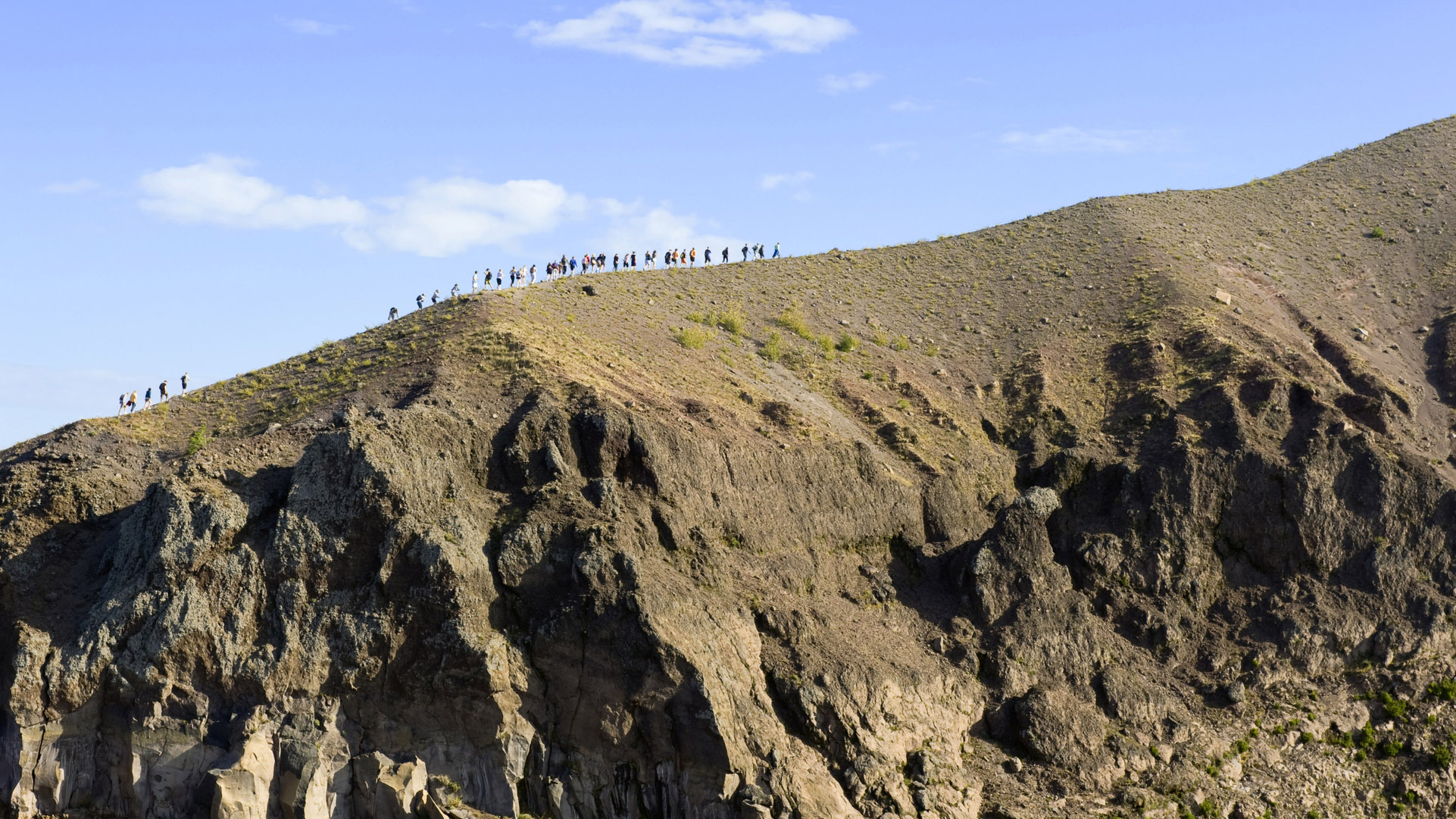
When to go: March to October
In 79AD, one of the world’s most famous natural disasters occurred. Above the prosperous Roman port city of Pompeii and the nearby town of Herculaneum, Mount Vesuvius erupted with devastating force, spewing unimaginably hot gas, pumice and ash over 30 km into the sky. For context, the eruption released around 100,000 times the thermal energy of the atomic bombs that fell on Hiroshima and Nagasaki. Pompeii, Herculaneum and much of the surrounding area were obliterated and buried underneath monumental pyroclastic surges and ashfall; their secrets were to be discovered by archaeologists almost 2,000 years later.
Considering the violence of this event and the fact that Mount Vesuvius is to this day still an active volcano, it might surprise you that it is a very popular hiking objective. The lure of ascending such a natural and historical icon is evidently strong, while the thrill standing on something that contains such gargantuan elemental power is hard to ignore. Plenty of tour operators can take you to the volcano’s lower slopes and from there you can ascend the steep, dusty paths to its highest point at 1,281 meters, walk around the huge crater and enjoy extensive views of the Bay of Naples.
Hiking in Italy: long distance treks
Italy is home to some staggering long-distance treks, particularly in the north where the great mountains of the Alps rise in a grand arc across its border. Here, we’ve chosen two classic alpine journeys, one among the esoteric limestone peaks of the Dolomites and another in an unspoilt slice of Western Alps magnificence.
Alta Via 1
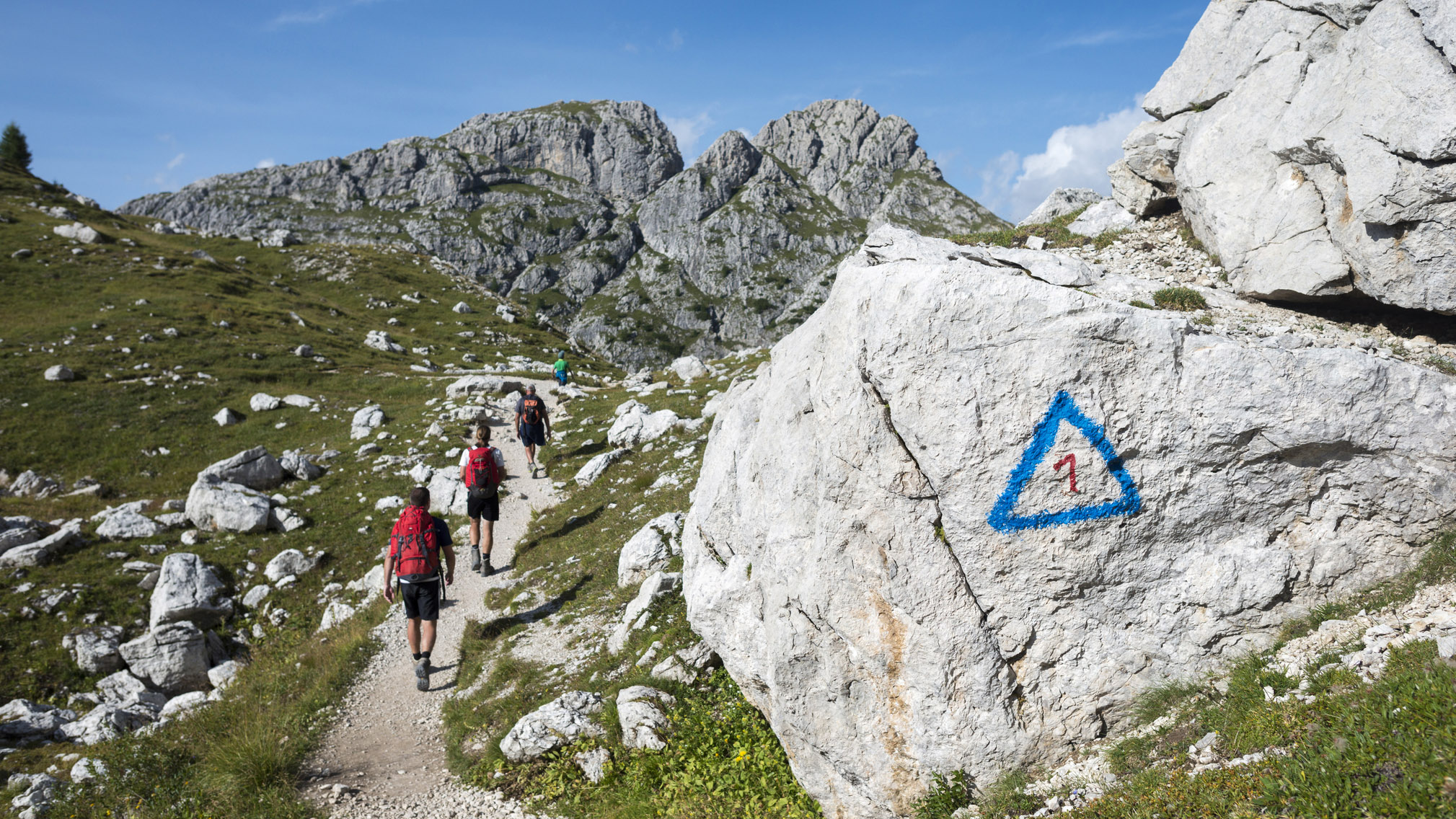
When to go: Mid-July to mid-September
The Alta Via 1 is many people’s first experience of the uniquely unsubtle charms of the spectacular Dolomites. Even in the Alps, a range liberally sprinkled with mountain magic, the landscapes of the Dolomites are the most enchanted. Leslie Stephen, the London-born 19th century mountaineering pioneer called them ‘the fairyland of the Alps’.
There are numerous Alta Via hiking routes through this scenically ostentatious corner of northeast Italy and they range markedly in difficulty. Alta Via 1 is the perfect introduction, showcasing the wonder of the region, while offering the right blend of challenge and accessibility during its 120 km journey. Starting from the picture-perfect Lago di Braies, you head south, discovering some of the region’s most exhibitionist peaks, such as the heavenly fortress of Monte Pelmo and the intimidating Civetta, before finishing in La Pissa.
Gran Paradiso Alta Via 2
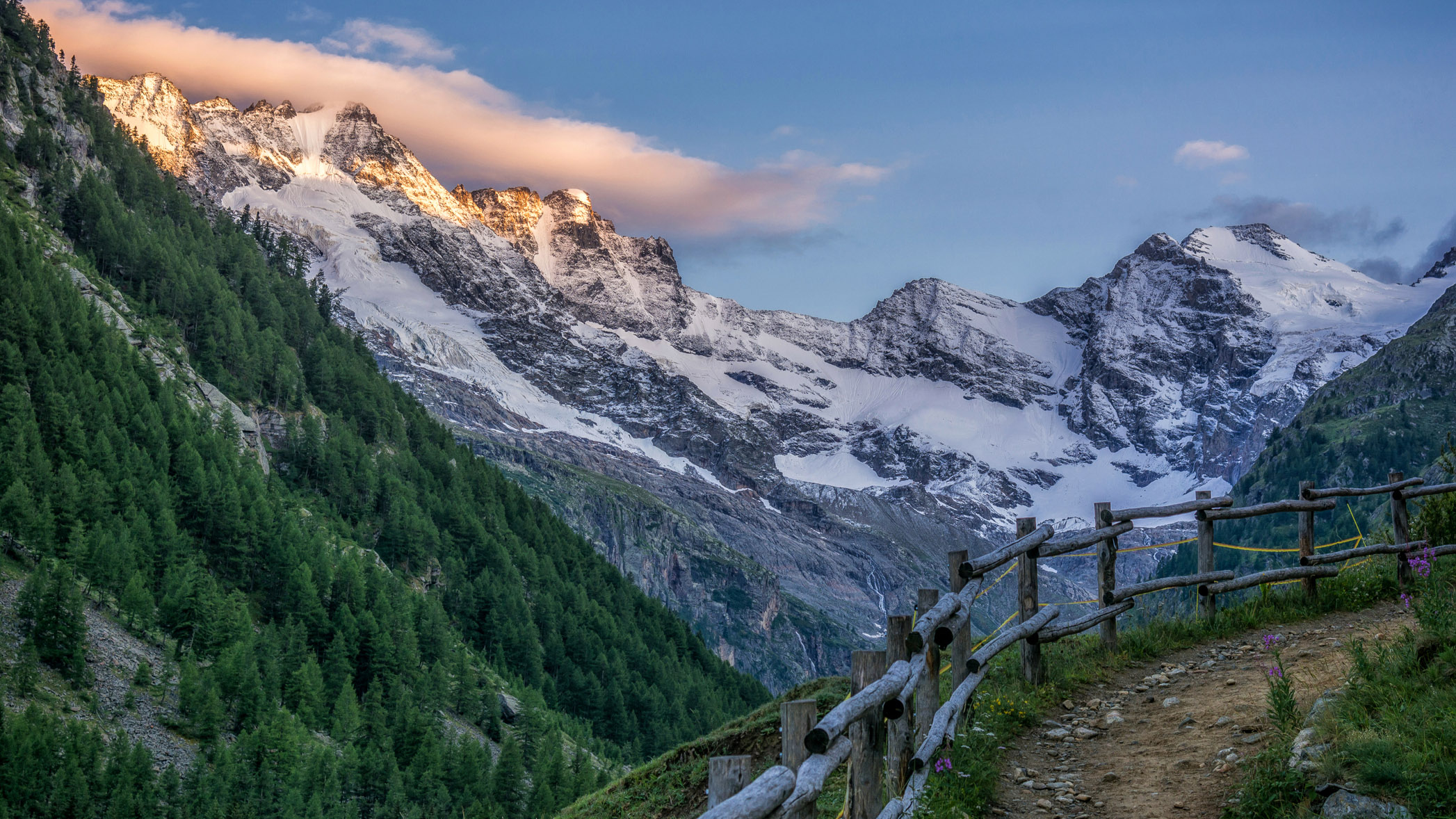
When to go: Late-June to mid-September
Gran Paradiso National Park, crowned by Italy’s highest mountain that doesn’t share the border with France or Switzerland, is a serene and spectacular place. A former royal hunting region, there are no ski developments or bustling alpine resorts here. Instead, this is an area characterised by villages that time forgot, by silent summits and by undisturbed natural beauty. Get your binoculars ready – marmots, chamois and ibex roam freely while eagles soar in the skies above. Any elevation gained here is hard earned, there are no lifts or funicular railways to whisk you upwards.
The Gran Paradiso Alta Via 2 is a 143 km trek that takes you breathlessly over high cols and rewards with magnificent alpine vistas – paradise indeed. From Chardonney in the east, you pass between the region’s two icons, Gran Paradiso and the shapely Grivola, before finishing some twelve days after you started at Courmayeur, in the shadow of Mont Blanc.
Alex is a freelance adventure writer and mountain leader with an insatiable passion for the mountains. A Cumbrian born and bred, his native English Lake District has a special place in his heart, though he is at least equally happy in North Wales, the Scottish Highlands or the European Alps. Through his hiking, mountaineering, climbing and trail running adventures, Alex aims to inspire others to get outdoors. He's the former President of the London Mountaineering Club, is training to become a winter mountain leader, looking to finally finish bagging all the Wainwright fells of the Lake District and is always keen to head to the 4,000-meter peaks of the Alps. www.alexfoxfield.com

